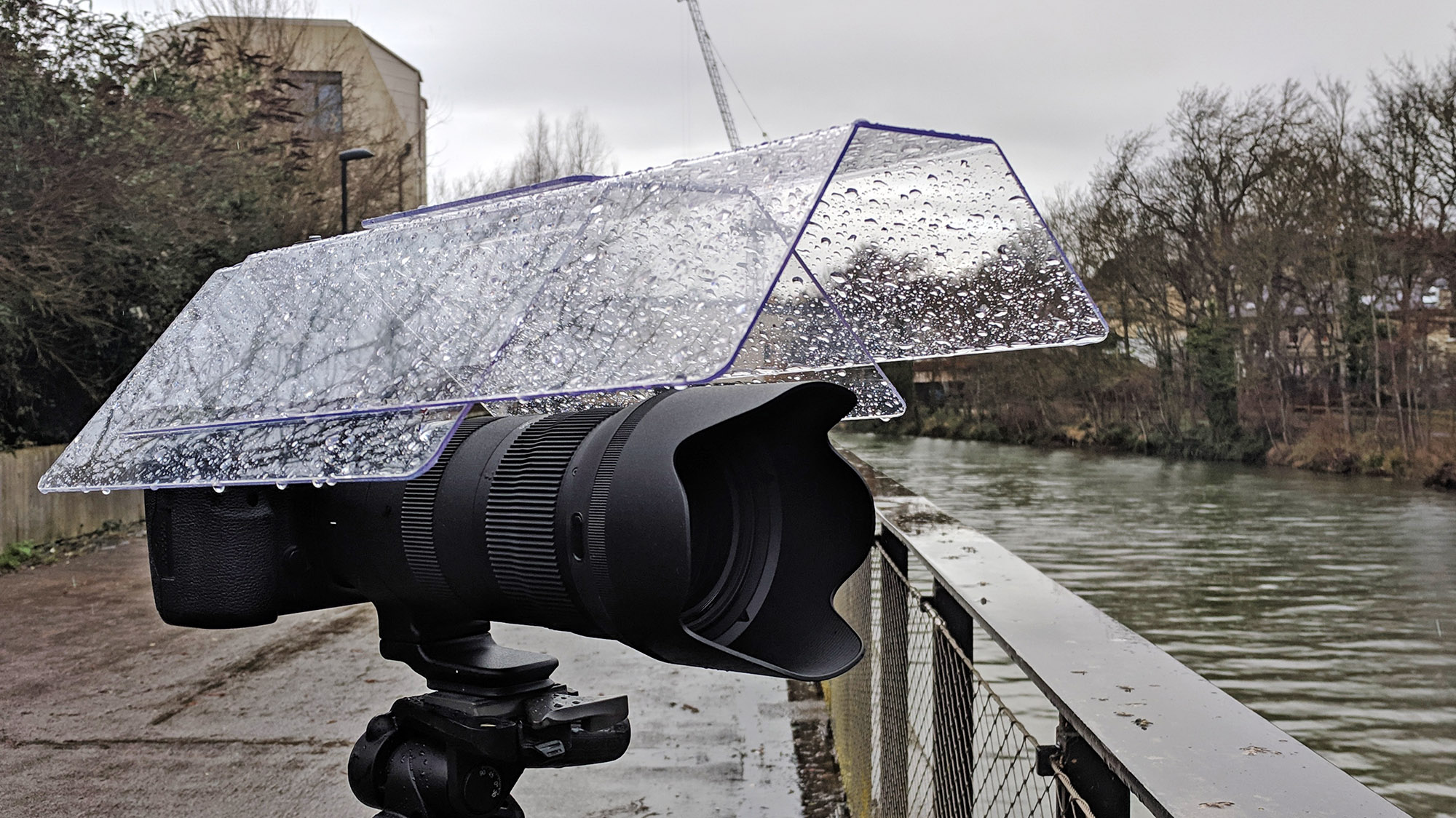Digital Camera World Verdict
Fed up with fumbling for camera and lens controls through a steamed-up plastic bag rain cover? There are no such problems when your gear is protected by a Camera Canopy, but you'd better hope the rain only falls straight down.
Pros
- +
Very easy to fit
- +
Excellent camera and lens access
- +
Extends to cover long lenses
Cons
- -
Heavy and bulky
- -
Landscape-orientation only
- -
Limited rain protection
Why you can trust Digital Camera World
Photography in the rain is rarely much fun, and it's even more uncomfortable if your camera or lens isn't weather sealed. That's because the usual solution for keeping your kit dry is to to shroud it in a rain cover - or in other words, a glorified plastic bag with a hole in the end to let the front of your lens poke through. Sure, it'll keep the rain off your gear, but operating key functions and rotating lens rings becomes a slippery, fumbling chore, made worse if smaller buttons become obscured by droplets on the bag.
The Camera Canopy has been designed to both keep your camera and lens dry while also maintaining their easy usability. It's available direct from the Camera Canopy website for $79.99 + $9.99 shipping to US mainland addresses.

Features
As with many great inventions, the Camera Canopy is beautifully simple. A sheet of transparent 2mm-thick acrylic, bent downwards on either side to form a 'roof', attaches to your camera's hot shoe via a strong metal bracket. A secondary, movable acrylic panel can slide forward, extending the canopy's length to around 45cm in order to cover longer lenses (Camera Canopy's maker states lenses up to 500mm can be covered). Alternatively, this extra section can be removed entirely, creating a lighter 28cm-long cover suitable for shorter prime lenses.
All mounting hardware is included, as is a simple carry pouch that can be worn as a rudimentary backpack.

Performance
Attaching the Camera Canopy to your camera is child's play. A small spigot slots into the hotshoe and tightens like a conventional flashgun mount. The canopy's metal bracket then slots onto the spigot and a small wing nut clamps it in place. That's it! Near-instantaneous rain protection.
Compared to a traditional plastic bag rain cover, the Camera Canopy is a joy to use. There's plenty of room for your hands to get underneath to rotate zoom and focus rings, as well as operating your camera's shutter release and other buttons. There's no fiddling trying to line up cutouts in a bag around your viewfinder and the front of your lens, and your camera's main monitor is left completely unobstructed for easy viewing and touch-screen operation.

There are however a few issues. Firstly, at around 760g, the canopy is surprisingly heavy, and all that weight is hanging forward of the mounting point, applying quite a lot of leverage on your camera's hot shoe. We doubt this would cause any long-term damage in normal use, but it does mean it's very easy to knock the front of the canopy and accidentally move it from side to side. It also means you can't rotate your camera to portrait orientation for a quick vertical shot, as the canopy would inevitably pivot on the hotshoe and drop down.
The best camera deals, reviews, product advice, and unmissable photography news, direct to your inbox!
More concerning is that while the design is well suited to protecting against straightforward vertical rain, if the wind gets up, it'll easily blow water in under the canopy. There's also no rear overhang (as this would prevent you resting your eye against the viewfinder), so there's very little rain protection for your camera's rear panel.
To be fair to Camera Canopy's designers, they are up front about these limitations on the product's website, but they're limitations nonetheless. Finally, the rigid bent plastic shape means you can't really slot it into a typical camera backpack, so the included cover is definitely required for transportation.

Verdict
We love a fresh take on solving an age-old photography problem, especially when it's been developed by a small team of Brooklyn-based enthusiasts and made in the US of A.
The Camera Canopy very much succeeds in its mission to make wet weather photography easier and more ergonomic, but in addressing these issues it causes other problems, namely with the product's sheer bulk and the quality of its weather protection.
The Camera Canopy makes sense as an extra layer of cover for an already weather-sealed camera and lens, and its extending front panel means it can offer decent protection to a non-sealed lens. But the lack of rear overhang means we wouldn't trust it to protect a non-weather-sealed camera body if there's any amount of wind.
This compromise is also problematic when you consider the $80 cost of the Camera Canopy compared to a bag-type product such as an Op/Tech Rainsleeve that can be had for under £10/$10 and affords better rain protection, albeit with typical ergonomic bugbears.

Read more:
The 50 best photography and camera accessories in 2019
The 10 best waterproof cameras in 2019
What's the difference between weatherproof and waterproof cameras?
Ben is the Imaging Labs manager, responsible for all the testing on Digital Camera World and across the entire photography portfolio at Future. Whether he's in the lab testing the sharpness of new lenses, the resolution of the latest image sensors, the zoom range of monster bridge cameras or even the latest camera phones, Ben is our go-to guy for technical insight. He's also the team's man-at-arms when it comes to camera bags, filters, memory cards, and all manner of camera accessories – his lab is a bit like the Batcave of photography! With years of experience trialling and testing kit, he's a human encyclopedia of benchmarks when it comes to recommending the best buys.


